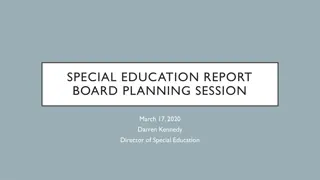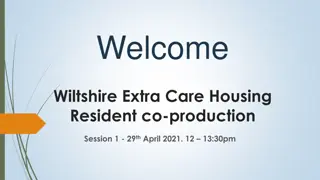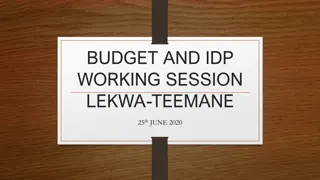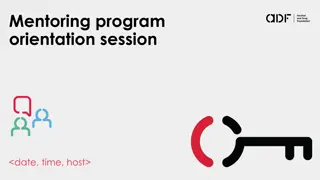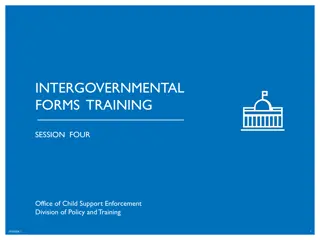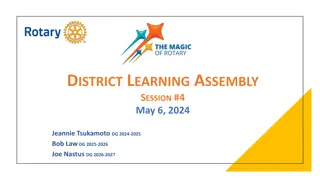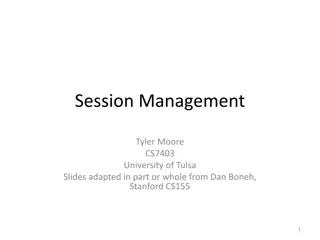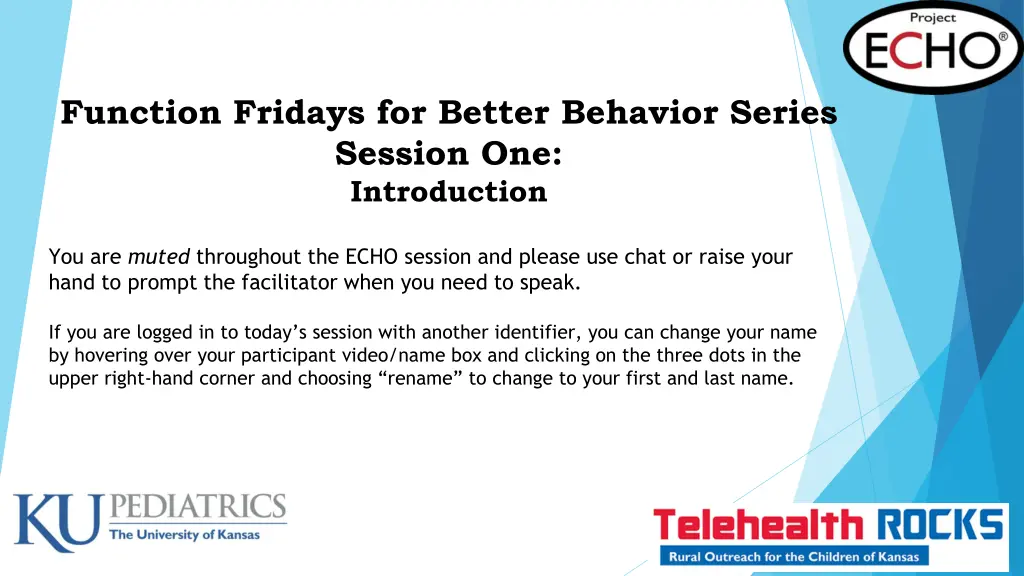
Better Behavior Series: ECHO Session Introduction
Join the Function Fridays for Better Behavior Series in Session One for an insightful introduction to the ECHO session. Learn about objectives, presentations, and mitigating bias in clinical medicine. Get ready for interactive discussions on data collection basics and more.
Download Presentation

Please find below an Image/Link to download the presentation.
The content on the website is provided AS IS for your information and personal use only. It may not be sold, licensed, or shared on other websites without obtaining consent from the author. If you encounter any issues during the download, it is possible that the publisher has removed the file from their server.
You are allowed to download the files provided on this website for personal or commercial use, subject to the condition that they are used lawfully. All files are the property of their respective owners.
The content on the website is provided AS IS for your information and personal use only. It may not be sold, licensed, or shared on other websites without obtaining consent from the author.
E N D
Presentation Transcript
Function Fridays for Better Behavior Series Session One: Introduction You are muted throughout the ECHO session and please use chat or raise your hand to prompt the facilitator when you need to speak. If you are logged in to today s session with another identifier, you can change your name by hovering over your participant video/name box and clicking on the three dots in the upper right-hand corner and choosing rename to change to your first and last name.
Presenters: Leni Swails, PhD Skylar Bellinger, PhD Alice Zhang, PhD, BCBA-D Katy Tepper, PhD
Mitigating Potential Bias The information and recommendations involving clinical medicine is based on evidence that is currently accepted within the profession
Objectives: 1. Introduction of ECHO team and participants 2. Overview of ECHO structure and expectation 3. Discuss data collection basics
Introductions: Getting to know each other Briefly State (2-3 sentences): Your Name Where you re from Work Setting/Profession Reason for signing up for this ECHO
What to expect from this ECHO ECHO is a community This is a very interactive experience We encourage sharing, but please ensure you are not sharing any patient health information (PHI, see your ECHO Guidebook) Touchstones http://www.couragerenewal.org/PDFs/CourageRenewal- CircleOfTrust-Touchstones-stones-(c)2016-web.pdf This is an educational activity, not a clinical service
Sample Agenda Introductions and Check-In (9:00-9:10) Didactic Presentation (9:10-9:25) Case Presentation (9:25-9:35) Case Presentation Form: https://redcap.kumc.edu/surveys/?s=JMNYRN7HMJ Group discussion (9:35-9:55) Follow-up questions Suggestions Summary of Recommendations (9:55-10:00am) (to be emailed to presenter)
Why data? Without data you re just a person with an opinion. W. Edwards Deming Guide the identification of problem and solution Increase a behavior due to skill deficit Decrease problem or challenging behavior It s not only about effectiveness, but also ethics
What kind of data? Observable Objective Measurable Example Collect data for tantrum, what is tantrum? kicking, screaming, crying, saying no or I want , hitting, laying on the floor, going limp.
First step: Operationally define the behavior Characteristics of Good Definitions Objective: Describes observable characteristics of behavior (topography) and is free of inferential terms Clear: Readable and unambiguous Complete: Sets boundaries of instances/non-instances Aggression: Example: Forceful contact (audible) between hand or foot of child and another child, includes pushing, punching, slapping, kicking
Then: Choose dimension of behavior for measurement Frequency/rate of behavior: how often per unit time Duration of behavior: how long Latency: Time elapsed from some starting point to onset of a response (e.g., time it takes for a student to begin working from teacher s request) Percentage of opportunities: a student complied a teacher s instruction 5 out of 10 opportunities (50%)
Data collection tools Paper and pencil Student: Chad Behavior: Out of seat Definition: During class, any incidence Chad leaves his seat without permission from the teacher. Record when Chad s bottom is entirely off the chair and stop recording when Chad s bottom is in contact with the chair Date context Start time 1/1 Math 9:06 1/1 Math 9:25 1/1 Science 10:10 Stop time Duration 9:16 9:40 10:15 10 min 15 min 5 min
Data collection tools Data collection app or software Countee: Mobile app that allows frequency and duration data collection https://www.counteeapp.com/
Tips Do not record too many behaviors on one data sheet (it will be to overwhelming for data collector) Make the data recording form easy and fun Try out the recording form before it counts
Poll questions How often do you have direct contact with your target child? A) Less than once per week B) Once or twice per week (e.g. therapy sessions). C) Daily: Less than 1 hour per day. D) Daily: 1-4 hours per day. E) Daily: More than 4 hours per day. What is your comfort level with data collection? A) What s data? B) We know we should collect data but struggle with making it happen. C) We collect some data but could do better. D) We love data! We graph everything! :) What seems to be the easiest way for your team to collect data? A) Paper and pencil (Tally marks) B) An excel spreadsheet C) A phone or ipad app D) Making a mental note and hoping I remember!
Next Steps 1. Fill out the Case Presentation Form: limited opportunities, first come first served! 2. Choose one behavior from the SESBI-R as target behavior 1) Is the behavior you choose operationally defined? 2) Which dimension (s) of the behavior you are interested in measuring? 3) Considering how much contact you have with the child, what will be the frequency and duration of your observation? Is the observation time consistent? 4) Do you have limited resources to collect data?
When is a behavior considered a problem behavior? Behavior that is inappropriate to its context Behavior results in physical harm to child or others Behavior interferes with ability to learn or participate in daily activities Behavior disrupts child s social environment
Thank You! See you on Friday, Jan. 24thFunction Fridays for Better Behavior ECHO Series Session Two: Overview of Functions


